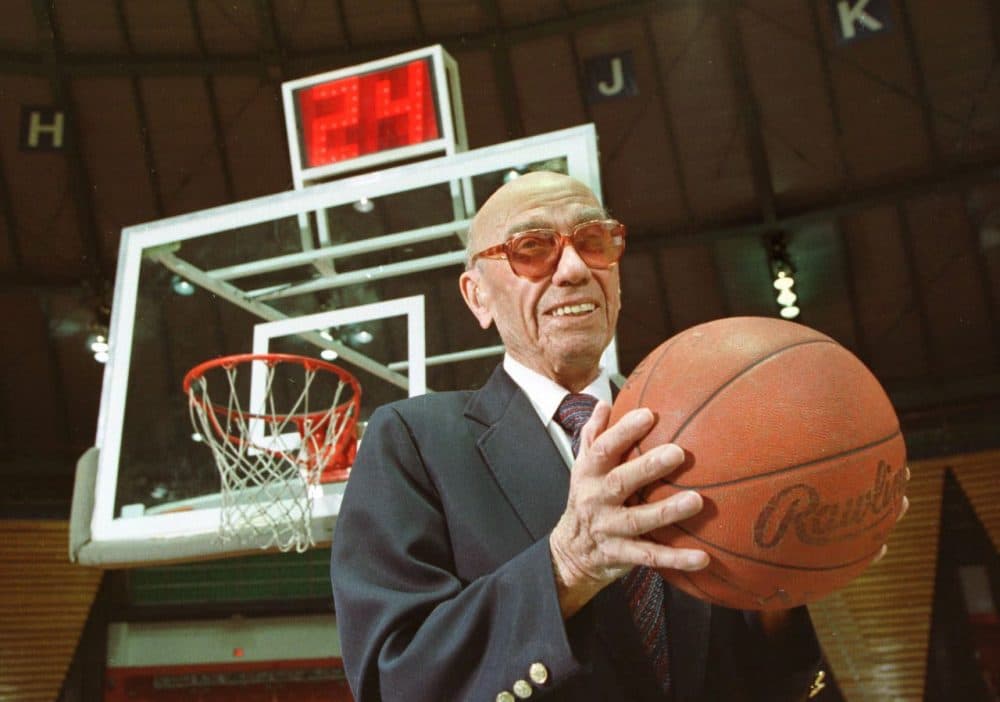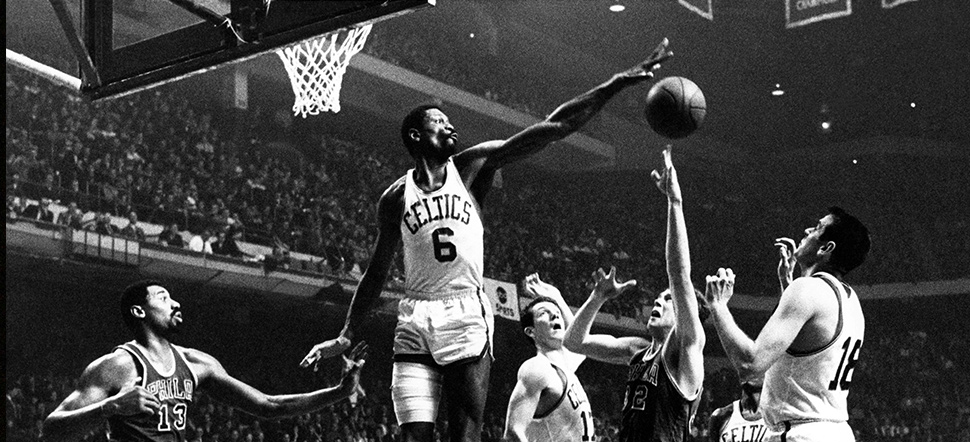Basketball is one of the most captivating sports for the current generation of viewers. Its popularity worldwide is at an all-time high. In general, the game has evolved since the first official NBA season in 1949-50. How to play the game is sometimes difficult to remember unless you are sports or a basketball enthusiast, like me. Interest in Basketball in the 1950s was at an all-time low as it trailed other sports such as baseball, football, and hockey. Here is a recap of what took place in the humble yet captivating first decade of one of the biggest spectacles in the world.
From before, there are a couple of current NBA teams that have their roots traced back all the way to the 1950s. The Los Angeles Lakers were the Minneapolis Lakers; the Sacramento Kings were the Rochester Royals; The Detroit Pistons were the Fort Wayne Pistons; The Philadelphia 76ers were the Syracuse Nationals; While the Atlanta Hawks were the Tri-Cities BlackHawks from Rock Island, Illinois, and Iowa.
1950 saw a team first lift an NBA Championship. Although there are records of three other champions between 1947 and 1949, the league was still under the Basketball Association of America (BAA). The 1950s laid the platform for the spectacle of the NBA Finals. Here we look at how the decade panned out and what impact was left behind after the decade ended.
There was an 11-team league starting in the 1950 – 51 season after the Washington Capitols folded on January 9, 1951, when they had a 10 – 25 record. The Capitols were one of 4 teams to have folded from being in the league Chicago Stags, Denver Nuggets, and St. Louis Bombers. Eventually, the Anderson Packers, Sheboygan Red Skins, and Waterloo Hawks also left. After all this chaise, the number of teams in the league shrunk to 10. Washington D.C. would does not have an NBA team until the establishment of the Baltimore Bullets in 1973. Prior to the 1953 – 54 season, the Indianapolis Olympians also folded. They would eventually return as the Pacers in 1977. During this season, NBA signed a national television contract with DuMont Television network, allowing them to televise 13 games. The Baltimore Bullets dropped out this season as well, and they would eventually return in 1973 and relocate to Washington. They are now known as the Washington Wizards in present-day. The Milwaukee Hawks played their final season in 1955 before relocating to St. Louis. NBA would eventually make a team in Milwaukee in 1968. The Pistons would relocate from Fort Wayne to Detroit, and the Royals would relocate from Rochester to Cincinnati.

The first half of the 1950s showed domination from the Minneapolis Lakers, who won the title four out of the first five years in the decade. They won it first in 1950 before losing in the Western Division final, now known as the Western Conference Finals, to the eventual champions, the Rochester Royals, in 1951 in what was considered, at the time, the biggest upset in basketball history. After their shocking 1951 defeat, the Lakers were able to bounce back by winning three consecutive titles between 1952-1954. The second half of the decade proved to be much more competitive, with the Boston Celtics winning it twice in 1957 and 1959, the Syracuse Nationals (1955), the Philadelphia Warriors (1956), and the St. Louis Hawks (1958) who were the other champions in the 1950s. The team that was the unluckiest in this decade was the New York Knicks. They reached the finals for three consecutive years between 1951-1953. However, they agonizingly lost all three, with two of them going to game seven. In 1951, the Knicks came back from a 3-0 deficit against the Rochester Royals. The two were tied at 75 points each headed into the last two minutes of Game 7. However, the Knicks eventually lost that game 79-75. No team has ever come back from a 3 – 0 deficit in any playoff series. However, the Royals were one of a couple of teams who could force a Game 7 in a Best-of-7 Playoff series but not win.
The idea of holding an All-Star Game got popular during a meeting between NBA President Maurice Podoloff, NBA publicity director Haskell Cohen and Boston Celtics owner Walter A. Brown in 1950. Podoloff balked at the idea of having a basketball game similar to what the MLB did every season during that time. They wanted to showcase the league’s best players in one game. He relented when Brown said he would host the game and incur all the expenses associated with the game. The first-ever All-Star Game was played at the Boston Garden on March 2, 1951. It was the first of the traditional Western vs Eastern division. The starting lineup for each squad is determined by a combination of fan, player, and media voting. At the same time, head coaches choose the reserves, seven players from their respective conferences, so each side has a 10-man roster. Celtics forward Ed Macauley was named MVP. The game was an immediate success, in which Boston, who had only been drawing in about 3,500 fans a game, saw over 10,000 people come to watch the game. The first two NBA all-star games were in Boston, but afterward, it was hosted by the team with the best record. In 1953 Fort Wayne became the second city to host the game, and during this time, the All-Star Game MVP was voted the best performer by the media members. In 1954 and 1955, New York City became the second and last city to host the All-Star Game in back-to-back years. Following concerns that the same cities would always host the game and that more time and money were needed to prepare, the NBA decided to start awarding the game to cities that bid for it. Boston would be the last team to host it based on the record in 1957.

The NBA League Most Valuable Player (MVP) was introduced in the 1950s. George Mikan was the most successful player of the decade, winning four NBA titles with the Minneapolis Lakers; however, he won no MVPs. He had a unique journey as he first retired in 1954 but returned for a season in 1956. He then took over the reins as head coach of the Lakers in 1957. In this decade, we also saw the debut of some of the greatest players ever to grace the court, such as Bill Russell and Elgin Baylor. The inaugural award was presented to Bob Petit in 1956. Petit won the award once again in 1959. Bob Cousy and Bill Russell, who won the award in 1957 and 1958, were the two other players to receive the award in the 1950s.
Since 1956, the NBA has awarded the most outstanding player of the season the Maurice Podoloff Trophy, the actual MVP (Most Valuable Player) trophy, which was named in honor of the first commissioner of the NBA. Until 1980, the MVP was decided by a vote of NBA players. From there onwards, a panel of players, media, and sportswriters agreed upon who should win the MVP Award. The winner gets determined via a tally system, where members of the voting panel cast votes for first through fifth place selections:
- First place is worth 10 points.
- Second place is worth 7 points.
- Third place is worth five points.
- Fourth place is worth 3 points.
- Fifth place is worth 1 point.
Until 2010, one ballot was cast by fans via online voting. Bob Pettit of the St. Louis Hawks was the first to win MVP. Some of the greatest players to grace the basketball court, such as Michael Jordan, Lebron James, Kareem Abdul-Jabbar, Wilt Chamberlain, and Bill Russell, have won the award. Every player who won the MVP Award has gotten nominated to the Naismith Basketball Hall of Fame.
The Rookie of the Year award is given to the best-performing newcomer in the NBA Season, and media members vote upon it. Don Meineke of the Fort Wayne Pistons was the first to win Rookie of the Year in 1953. One fun fact about this award is that two players, Wes Unseld, and Wilt Chamberlain, have won this ward simultaneously with the MVP award. Another one is that Bill Russell would win the Rookie of the Year alongside leading his team to win the NBA Championship in 1957.
The 1950s, as a whole, was a pioneering decade for the NBA for the quality of play that the teams had managed to produce. This was the decade in which the shot clock got introduced, in the 1954-55 season that the Syracuse Nationals won. It was prompted when the Indianapolis Olympians (formerly the Jets) played 6 five-minute overtime periods against the Rochester Royals, meaning an extra half-hour of game time. The introduction of the shot clock, coupled with the fact that there wasn’t a three-point line, meant players tried to get as close to the basket as possible before attempting a shot. The result of such a style of play was the domination of the Center and Power Forward positions. In 1954, the NBA adopted the 24-second shot clock, which is an integral part of today’s game. The rule change was motivated by Danny Biasone, the owner of the Syracuse Nationals at the time. The following season saw a rapid change in the game as players got forced to move the ball up the court while also conducting the offense. In 1950, the Fort Wayne Pistons defeated the Minneapolis Lakers by a score of 19 – 18. Yikes!! The clock saved professional basketball as games produced more high scores, which generated excitement for the game. Before this, boring and low-score games were common, as when teams had led by a decent margin, guards would just kill time by dribbling until they got fouled. In certain instances, it took almost five minutes for a team not to take a shot.

One problem with early NBA teams was that they prohibited African Americans. During the 1950s, racial segregation and issues stood out and were significant problems. Many events, such as Brown v. Board of Education ruling racial segregation as unconstitutional and Rosa Parks refusing to give up her seat to a white man, divided the country, causing the NBA to gain less attraction. All Black athletes across major professional sports leagues like the NBA, NFL, and MLB were breaking out and proving people wrong throughout these challenging times of discrimination. In 1947, Baseball player Jackie Robinson became MLB’s first superstar. Eventually, the Celtics drafted Chuck Cooper, making him the first-ever Black NBA player. Earl Lloyd of the Washington Capitols became the first Black to ever play in an NBA game. During this time and five years before Jackie Robinson became the first black player for the MLB, the NBL already had black players on their teams. Another player by the name of Wataru Misaka, a guard of Japanese descent, became the first ever non-white player to ever play in the NBA. The foundations for the league were built, impacting decades to come. It also brought along independent black stars such as Bill Russell, Wilt Chamberlain, and Elgin Baylor, who are among the greatest to have ever stepped foot on a basketball court. Their all-around skill and athleticism made them Hall of Famers and are an inspiration for today’s players. They showed racial pride and had symbols of black achievement, which was significant in the black community. Black stars succeeding in the NBA got rid of my myth of white supremacy. Also, during this time, there was a trend in taller players doing all the scoring, alongside rebounding—this laid foundation for big men such as Bill Russell and Wilt Chamberlain. The movement toward the need for a big man to come in was essential for a team to compete for a title for years.

This is dope!!!!!!!